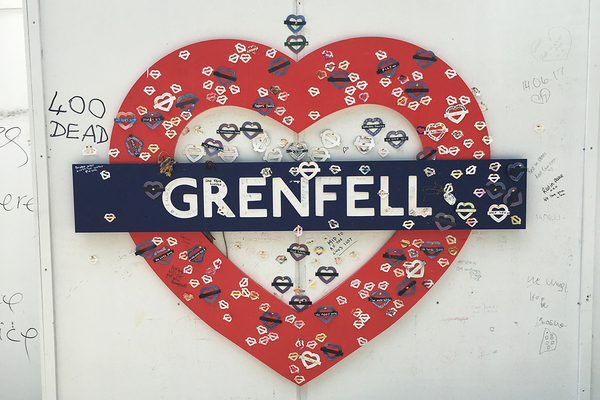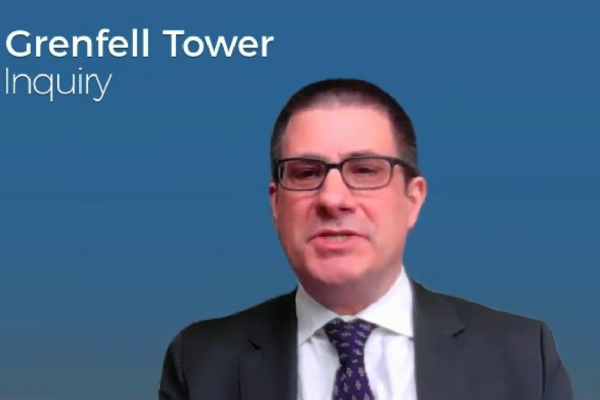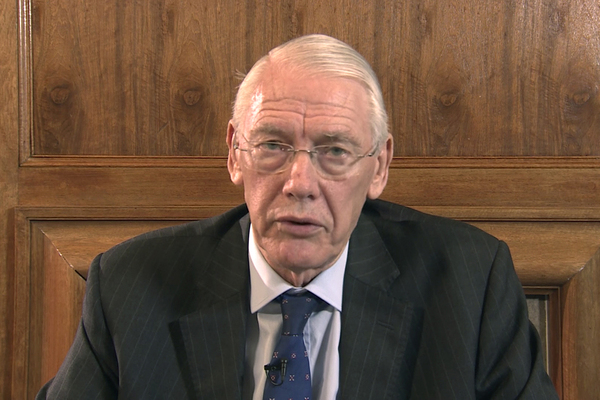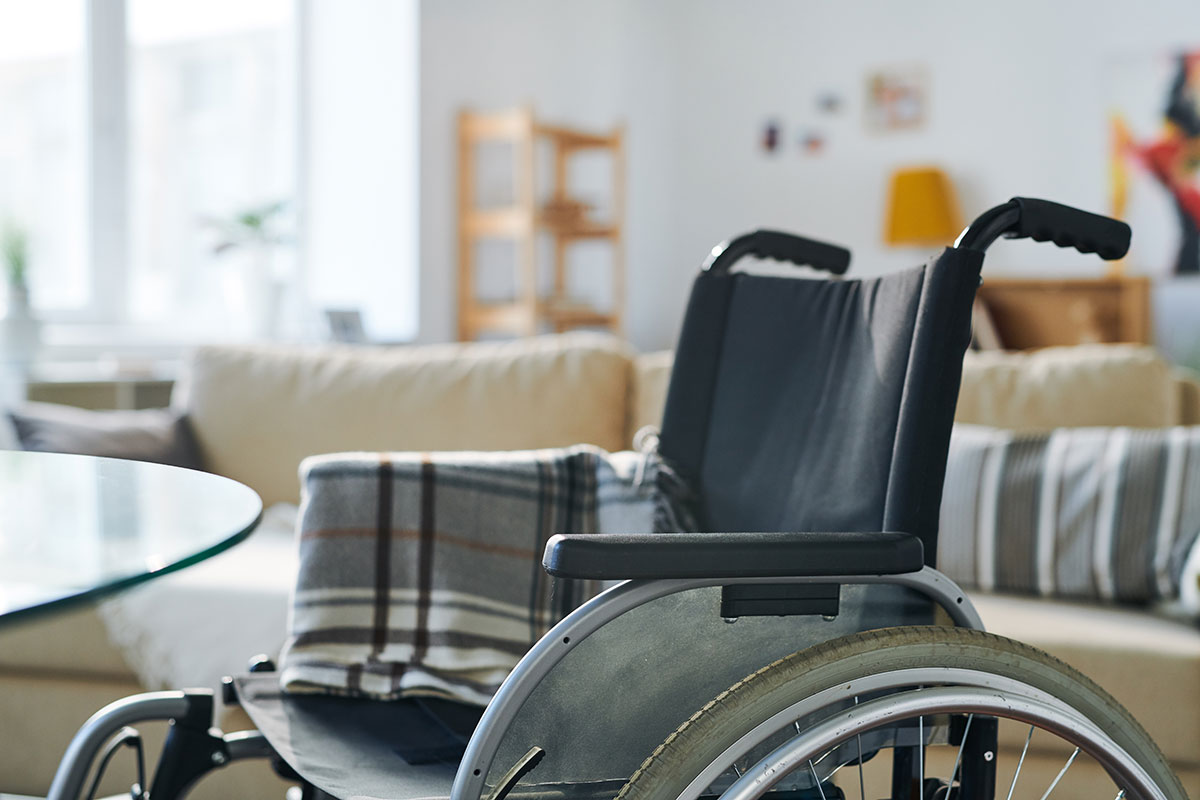Government watered down implementation of Grenfell recommendations for disabled people after push from lobbyists
The government proposed watering down key recommendations of the Grenfell Inquiry, including those relating to the evacuation of disabled people, after an industry lobbying group described them as costly and impractical, newly released documents reveal.

Minutes of a meeting held behind closed doors in April, released as part of a legal challenge by a beareaved family, show fire and housing sector lobbyists describing evacuation plans for people with disabilties as “totally impracticable” and advising that they should continue to rely on ‘stay put’ advice if there was a fire.
The meeting also advised against introducing manual fire alarms for existing high-rises, as doing so was “not cheap”, and said general evacuation plans for most buildings should amount to no more than “a simple reiteration of the standard stay put strategy”.
A government consultation on the proposals, published in July, proposed requiring evacution plans for disabled people only in buildings with known safety issues and a waking watch – a substantial watering down of the inquiry’s recommendation (see box below).
Despite this, the government has continued to say publicly that it is implementing the recommendations of the Grenfell Inquiry in full. In his speech on the third anniversary of the fire, prime minister Boris Johnson said: “We’re working to implement every recommendation made by the first phase of the inquiry.”
The Grenfell Tower fire killed 72 people in June 2017, including a significant number who had disabilities, which hindered their ability to escape.
The bereaved son of Sakina Afrasehabi, a disabled woman killed at Grenfell Tower alongside her sister Fatemah, said the revelations had made the inquiry feel like “a joke”.
Fatemah’s daughter added that her mother “gave her life” to stay with her sister and that “there is no price you can put on such humanity and love”.
The Home Office settled this action out of court, agreeing to rerun a specific consultation on PEEPs and to pay the family’s legal costs.
But it was required as part of the action to disclose the informal notes it took and the formal minutes of a meeting of the Fire Industry Association’s ‘special interest group’ on 22 April.
The group was convened to advise the Home Office on the implementation of the Grenfell Inquiry recommendations and featured representatives from 12 housing and fire sector bodies including the National Fire Chiefs Council (NFCC) and Local Government Association (LGA) (see responses box below).
The informal notes, taken by a Home Office representative, show the group said the provision of PEEPs in all high-rises would be “completely impracticable and not doable”.
“General need and specialised housing do NOT have staff available to facilitate evac,” the notes said. “Council would have to rehouse them or distribute individual alarm systems.”
The notes added: “Stay put is conducive to people who are vulnerable – it is safe for them to stay in their flat.”
The formal minutes said: “The FIA, in consultation with the housing sector, strongly consider that this recommendation is totally impracticable, as there are no staff within a high-rise residential building to carry out a PEEP.
“A stay put policy is conducive to the safety of disabled people if they cannot evacuate unaided. Alternative measures are available such as suppression systems and telecare.”
When the government consulted on this measure in the summer, it said PEEPs should be limited to blocks with dangerous cladding and a waking watch. “There are a number of practical challenges to the delivery of this recommendation that make it challenging to implement as written,” it said.
What was said at the Fire Industry Association meeting in April and what has the government done since?
Personal Emergency Evacuation Plans (PEEPs)
Sir Martin Moore-Bick (pictured), chair of the Grenfell Inquiry, recommended that “the owner and manager of every residential high-rise be legally required to prepare personal emergency evacuation plans for all residents whose ability to self-evacuate may be compromised”.
The notes record industry representatives calling this “completely impracticable and not doable”. They said as there were no staff present, the evacuation would “fall back to the fire and rescue service” and the “council would have to rehouse them [disabled residents]”.
They said it was better to give fire services “no info than give them the wrong info” as a firefighter might attempt a rescue only to discover the resident was “out at the theatre”.
In the formal minutes, it was said that the Fire Industry Association (FIA)’s view was that the measure was “totally impracticable”, adding that it would “be extremely difficult to keep any such PEEPs up to date in a building with a dynamically changing occupancy and sub-let flats”.
The representatives suggested consideration of “person-centred risk assessments” or telecare-enabled smoke alarms instead. “A stay put policy is conducive to the safety of disabled people if they cannot evacuate unaided,” they added.
When it published its consultation in July, the government watered down Sir Martin's recommendation to only require it in blocks with dangerous cladding and a waking watch. It has now agreed to rerun a specific consultation on PEEPs.
General evacuation plans
Sir Martin recommended that owners and managers of high-rises “be required by law to draw up and keep under regular review evacuation plans”.
Once more the group concluded this was “completely impracticable” and said it should be covered in existing risk assessments.
In the formal minutes, the group said: “In a high-rise block of flats, with a stay put strategy, it is difficult to see what an evacuate plan might comprise, other than a simple reiteration of the standard stay put strategy.
“Reiterating this strategy for every high-rise residential building in information provided to the fire and rescue service would be an entirely asinine exercise.”
The government consultation did say evacuation plans should be provided, but appeared to suggest a stay-put strategy could constitute an evacuation plan.
Alarms
Noting the difficulty raising the alarm at Grenfell Tower, Sir Martin said high-rises should “be equipped with facilities for use by the fire and rescue services enabling them to send an evacuation signal to the whole or a selected part of the building”.
Notes of the meeting show participants felt this requirement was a case of “cost against benefit (it’s not cheap)”. They added: “In a new building, they are a no brainer; retrospective thing is different.”
In the formal minutes, the group said it would be “premature” to legislate for retrofitting “without cost/benefit analysis and much more experience of their use”.
In its consultation the government said it had commissioned research on the alarms and would “consider this further” once it was provided.
Who attended?
The minutes give the names of organisations who attended, but do not show who said what. Not all participants will have shared the views expressed. It lists the FIA, a consultancy called Ensure Safety and Compliance, fire risk assessment providers All Saved and Metro Safety, fire consultancy BB7, fire equipment provider Johnson Controls, Enfield Council, the NFCC and the LGA. No representatives of any residents groups, the Grenfell community or disability rights avocates were present.
On general evacuation plans for buildings, the notes record participants saying: “This is completely impracticable. What is an evacuation plan? What difference this would [sic] make?”
In the formal minutes, they advised that it would involve little more than “a simple reiteration of the standard stay put strategy” and said requiring this would be “an entirely asinine exercise”.
This conclusion completely departs from the findings of Sir Martin, who chastised the fire service for treating stay put as “an article of faith” in his lengthy report on the fire.
The government did say it planned to legislate to require the development of evacuation plans, but appeared to suggest a ‘stay put’ strategy could suffice. “We expect that the evacuation plan would be dependent on the design of the building and the evacuation strategy in place, for example ‘Stay Put’ versus ‘Simultaneous Evacuation’,” the consultation said.
On alarms, the notes show fears about costs recording that participants said: “It’s cost against benefit (it’s not cheap).” They recommended their introduction only for new build.
In its consultation, the government said testing of and research into alarms had been commissioned and “once this evidence is available”, it would “consider this further”.
Separately and independently of government, the British Standards Institute has recently published official guidance on risk assessments in housing, PAS 79-2, which contains no provision requiring the provision of PEEPs for people with disabilities. Fire risk assessors use this document as model guidance.
It was authored by Colin Todd, a fire safety expert and a director at the FIA, who was also an expert witness for the inquiry. He was the only one of four expert witnesses to advise continued reliance on stay put in high-rises – a position the inquiry resoundingly rejected.
Shahrokh Aghlani, one of Ms Afrasehabi’s five children, said: “I don’t think providing evacuation plans is difficult. That’s an unacceptable argument when we are talking about the safety of citizens. We would be outraged if the aviation industry said safety was too difficult to do.
“It makes the whole idea of the inquiry appear a joke. It’s too late for my family now, but there are many other disabled people living in high-rises and I fear for them.”
Is it possible to provide a PEEP in a high-rise?
The Grenfell Inquiry considered the evidence of four expert witnesses on evacuations, and only one – Colin Todd – recommended sticking with existing stay put guidance.
Mr Todd was also the primary author of LGA guidance before Grenfell, which advised reliance on stay put, and is a director of the FIA.
While there are undoubtedly practical challenges with regard to the provision of PEEPs, Inside Housing has spoken to experts who believe it can be done.
Elspeth Grant, a consultant and specialist on PEEPs at Triple A Consult, said: “Non-disabled people would never accept being in a building they could not get out of in a fire, so why should disabled people accept it?
“It is actually already a legal requirement: Article 14(B) of the Regulatory Reform and Fire Safety Order says everyone should be able to evacuate a building and every single piece of guidance backs that up – with the exception of [Mr Todd’s] LGA guide.
“But within the fire and rescue service and industry, it’s endemic from top down to bottom up that they have never wanted to enforce that requirement when it comes to disabled people.”
She said developing PEEPs required talking to the affected residents and establishing what help they have in the building, including partners or neighbours.
Changes can then be introduced to the physical environment such as multiple handrails on the stairs and the provision of evacuation chairs and stair climbers.
“To develop the plan, somebody has to go round and talk to the person,” she says. “One of the main reasons organisations don’t want to do it comes down to money.”
Phil Murphy, a former firefighter and high rise safety consultant, added: “Perhaps you have a carry chair, perhaps you have suppression systems and Grade C detectors in every room.
“There are a range of things you can start to do by asking this question, all of them are about asking people what works best for them and about using the available data, the evidence, to intelligently direct fire safety resources towards those groups that we know will benefit most from having them.”
Mr Aghlani added that the Grenfell Inquiry evidence has underscored the need for better regulation of the industry. “There is a clear need for qualified inspectors and clear statutory regulations on people whom are in the building industry to maintain and enforce guidelines set by the regulatory body.
“People carrying out building work must be certified or qualified in the field and this requires education programmes.”
Raheleh Samimi, the daughter of Fatemeh Afraseibi, added: “By not adopting the recommendations of PEEPs, the authorities are not only condemning the disabled person who has no plan of escape in case of fire, but also their family members. My able-bodied mother was with her sister, Sakineh, on the night of the fire. There is no way a loving family member would abandon their sister, husband or child in such circumstances.
“They have no option to stay until rescue arrives and that is why PEEPs are so important. It is not simply the disabled person who is vulnerable. My mother and her sister were reduced to ashes side by side. My mother loved her sister to the end and gave her life for her disabled sister. She could have tried to escape. That is what I want to say and honour. And I want the authorities to understand that there is no price you can put on such humanity and love.”
Flora Neda, who is also disabled, was one of the only survivors from the 23rd floor together with her son who carried her down the stairs. Her husband Saber had stayed behind to help Fatemeh and Sakineh and two other women who had all taken refuge in their flat.
She said: “My husband told my son to take me and that he would help the women. The last time I saw my husband he was giving them towels to put round their mouths and trying to get them to move. My husband didn’t make it. I want to honour him. Without PEEPs, decent honourable people are shouldering the risks.
“Either offer suitable accommodation to disabled people or PEEPs. Right now, many vulnerable disabled people are given direct offers by councils which means they have no choice but to accept the flat offered or be declared ‘intentionally homeless’. If councils gave people appropriate housing or choice they would not be put at risk. If they can’t provide the right sort of housing, then at least have a plan in place in case of a fire emergency.”
Both women are members of the Grenfell Next of Kin group.
In a statement on Twitter, bereaved and survivors group Grenfell United added: “The same people that stopped changes to stay put after Lakanal House fire are doing same after Grenfell. The so-called ‘fire safety’ and housing industry - the FIA, Colin Todd, LGA and NFCC - publicly saying they care about us and behind the scenes lobbying against us.
“Congratulations to Sakina Afrasehabi’s family who campaigned for a review of the government’s decision which has exposed this meeting. Your actions have helped many disabled people across the country. Grenfell families will keep fighting for change all the way.
“The government must now do as it has promised & fulfil the Grenfell Inquiry recommendations in full and not allow these lobbyists and bias interests groups to put money above people’s lives.”
Update at 2pm on 18.3.2020:
The headline of this story was updated to make it clear that it was the plan for the implementation of the recommendations that was watered down, not the recommendations themselves
Responses
The National Fire Chiefs Council (NFCC)
The NFCC said it was only invited as an observer and was not a member of the group. Dan Daly, head of protection policy and reform unit at the NFCC, said: “We support the government’s consultative approach to the implementation of the Grenfell Tower Inquiry phase one recommendations, which need to be delivered in a way which helps fix the broken system and to restore public confidence in fire safety.
“With regards to PEEPs in residential buildings, the NFCC is working with fire and rescue services across the country who have raised concerns with us about possible impacts on vulnerable leaseholders and residents and housing providers.
“As PEEPs generally require on-site staff to facilitate them, they are usually only recommended in buildings specifically built to house vulnerable persons, such as care homes. The additional associated costs could be passed on to leaseholders and residents, in a similar way to those already facing costs due to waking watches in their buildings."
The Local Government Association (LGA)
A spokesperson for the LGA said: “To be clear, an LGA officer participated in the April meeting but the FIA response that emerged from that meeting should not be taken as an expression of the LGA’s view, which is contained in the consultation response. We did not comment on the FIA response that emerged from the meeting and we neither saw nor commented on the Home Office’s note of the meeting.
“Our advice on the Grenfell Tower Inquiry recommendations – indeed all our advice to government – is that the practicalities always need to be considered. This was the purpose of the FIA meeting held in April. As you can see, a range of stakeholders attended, including the NFCC, with whom we have worked closely on these topics.
“The LGA regularly raises questions with government about the practicalities of implementation in all areas of policy. It does not follow that the LGA opposes any proposal about which it has questions or is advising against its adoption; often it is a matter of considering how practical challenges to implementation can be overcome – in some cases this proves impossible, in others our questions lead to better policy.”
The Home Office
A spokesperson for the Home Office said: “We are doing everything in our power to implement the phase one recommendations of the Grenfell Inquiry in the most practical, proportionate and effective way to ensure such a tragedy can never happen again.
“It is important that we get this right and ensure the voice of residents is heard. That is why we have decided to seek further views on the complex issue of personal emergency evacuation plans.”
The FIA
The FIA did not respond to requests for comment.
Sign up for our fire safety newsletter
Already have an account? Click here to manage your newsletters






